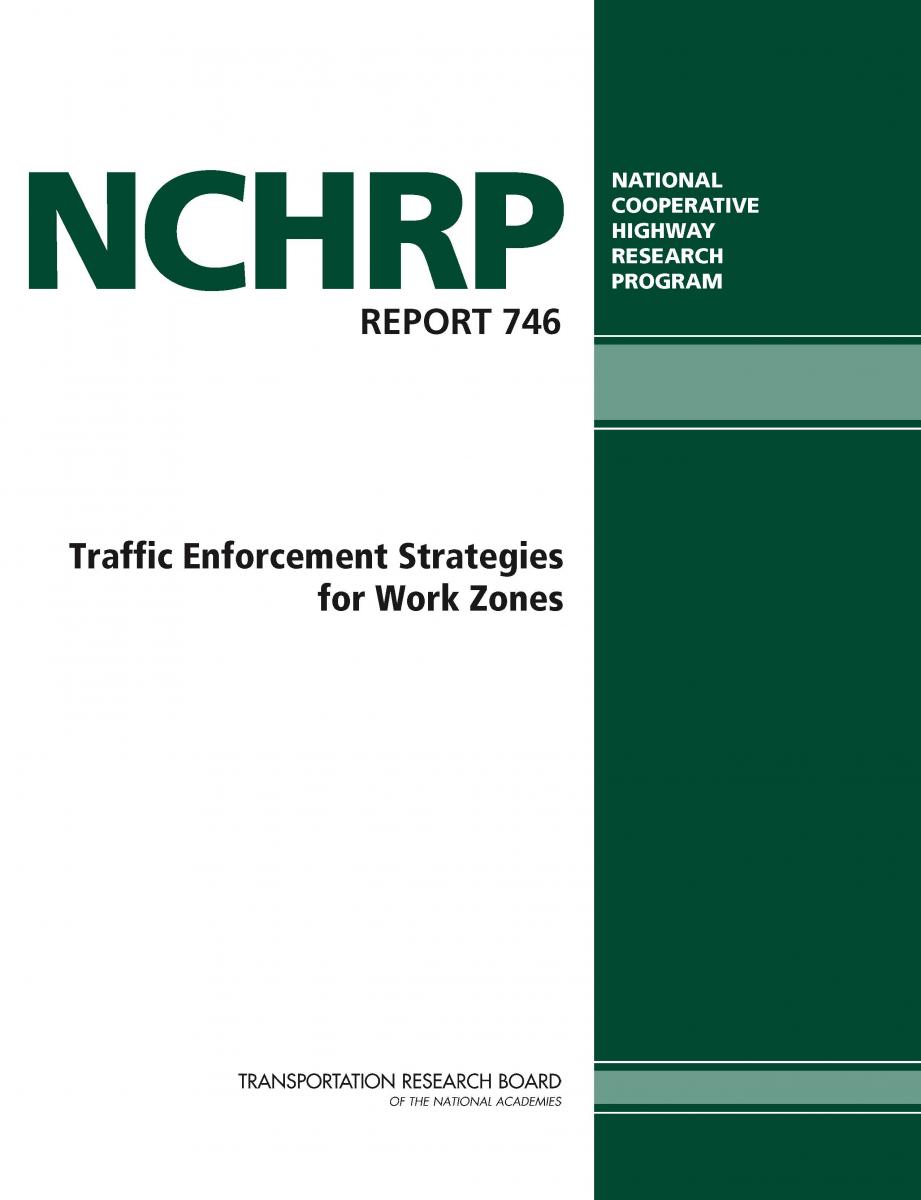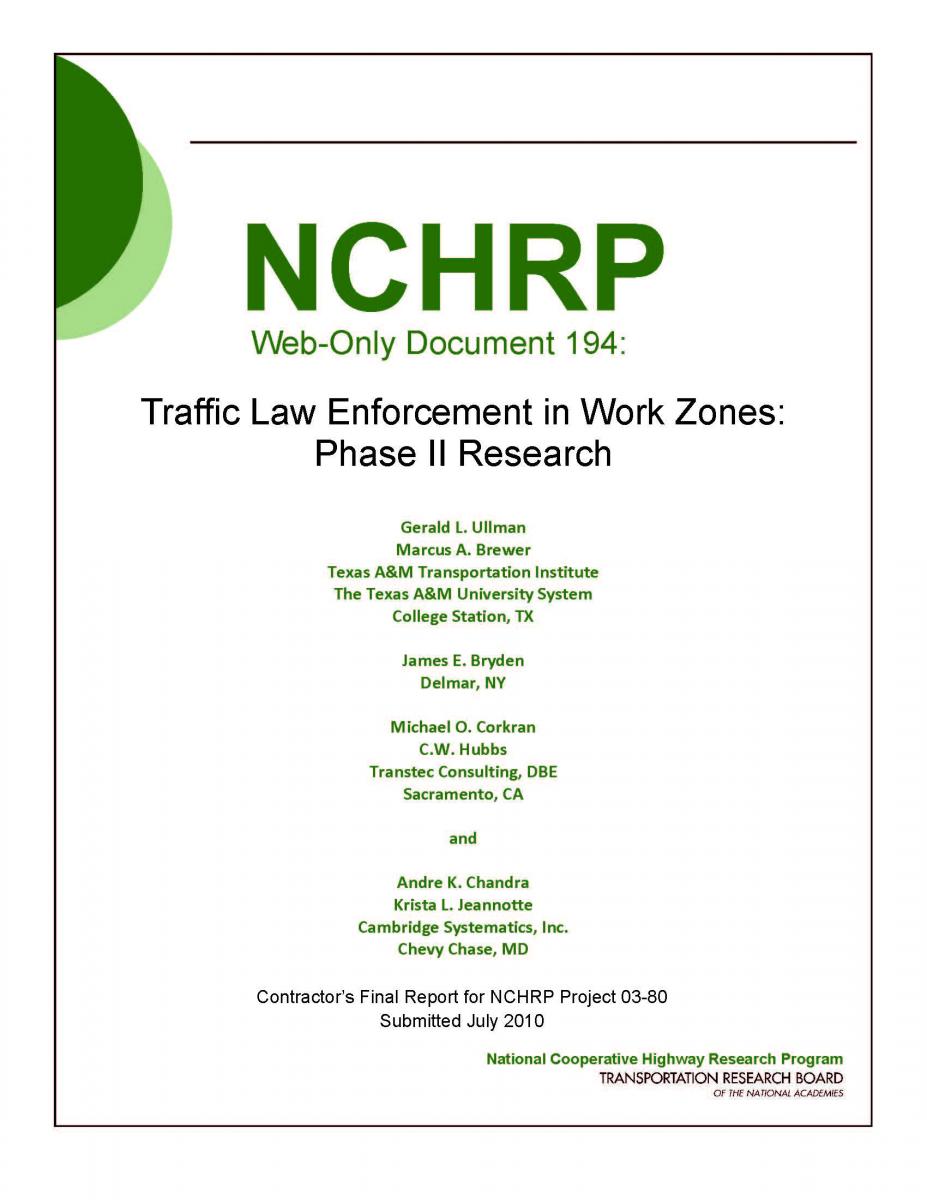Overview
 This report presents guidance for the safe and effective deployment of traffic enforcement strategies in work zones on high-speed highways with speed limits greater than 45 mph. The report discusses planning, design, and operation of traffic enforcement strategies, and associated administrative issues.
This report presents guidance for the safe and effective deployment of traffic enforcement strategies in work zones on high-speed highways with speed limits greater than 45 mph. The report discusses planning, design, and operation of traffic enforcement strategies, and associated administrative issues.
Traffic law enforcement by uniformed officers or other means can be effective in reducing undesirable driver behavior that contributes to crashes in highway work zones. Practices nationally vary widely on the enforcement strategies and philosophies used in work zones, the administrative mechanisms applied to establish and maintain a work zone enforcement program, payment methods for work zone enforcement efforts, techniques applied to supplement work zone enforcement, and public information dissemination practices employed to support work zone enforcement in a region. This report addresses the gap in objective guidance on selecting projects where enforcement would be most beneficial or on developing a traffic enforcement strategy for a work zone.
During the supporting project for this guidebook, the research team surveyed the literature and practice and identified technologies that can supplement or supplant law enforcement personnel. They conducted structured group interviews to gain additional insights into the benefits and concerns associated with law enforcement in work zones. Knowledge gaps pertaining to work zone traffic enforcement were identified and, insofar as resources allowed, addressed through the collection and analysis of field data.
 The contractor’s final report providing background information for the project is available as NCHRP Web-Only Document 194.
The contractor’s final report providing background information for the project is available as NCHRP Web-Only Document 194.